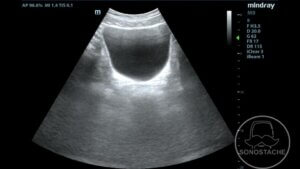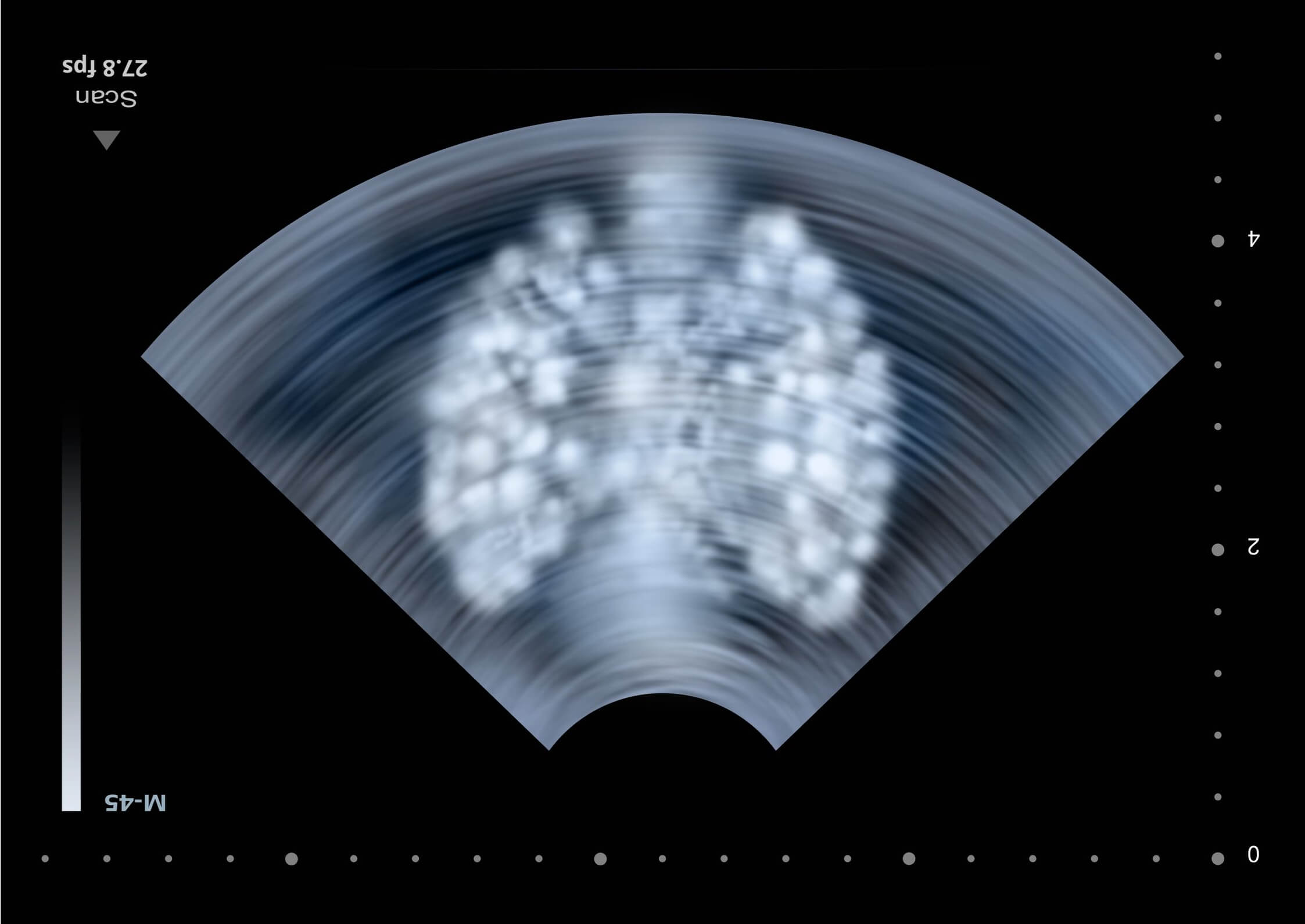05 Apr FAST Exam
Focused Assessment with Sonography in Trauma (FAST) Exam
Indications:
Thoraco-abdominal trauma, concern for intra-peritoneal bleeding, and commonly an evaluation in ruptured ectopic pregnancy.
Probe Choice:
Curvilinear probe (preferred) or phased array probe
Basic Views & Anatomy:
Cardiac: The subxiphoid view is most commonly used, however any standard cardiac view may be used to evaluate for pericardial effusion.
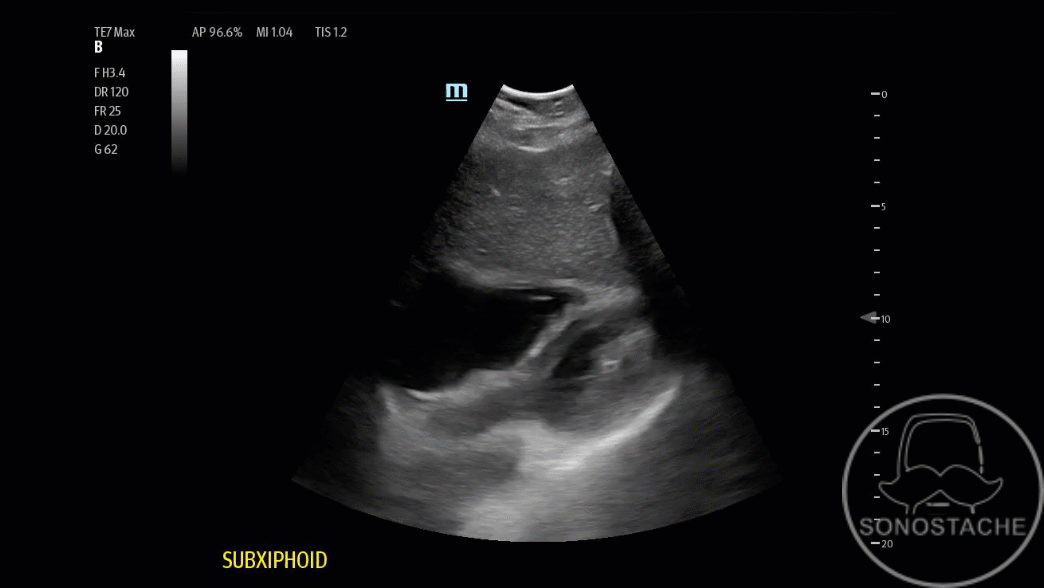
The goal of this view is not fine evaluation of heart chambers or valvular function. The pericardium needs to be examined for signs of effusion, which will be layering around the heart. In the setting of trauma, particularly penetrating trauma, assume this is hemopericardium and would require immediate intervention (ED thoracotomy, pericardiocentesis, or other OR intervention).
Right Upper Quadrant (RUQ) view
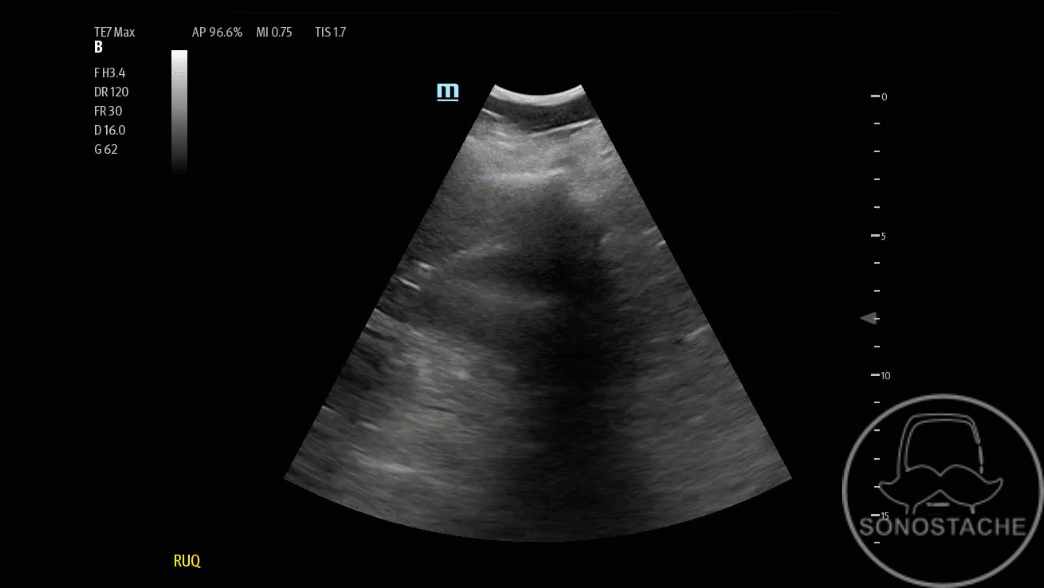
This view needs to evaluate the hepato-renal space (Morrison’s pouch) and the liver tip for signs of free fluid.
Left Upper Quadrant (LUQ) view
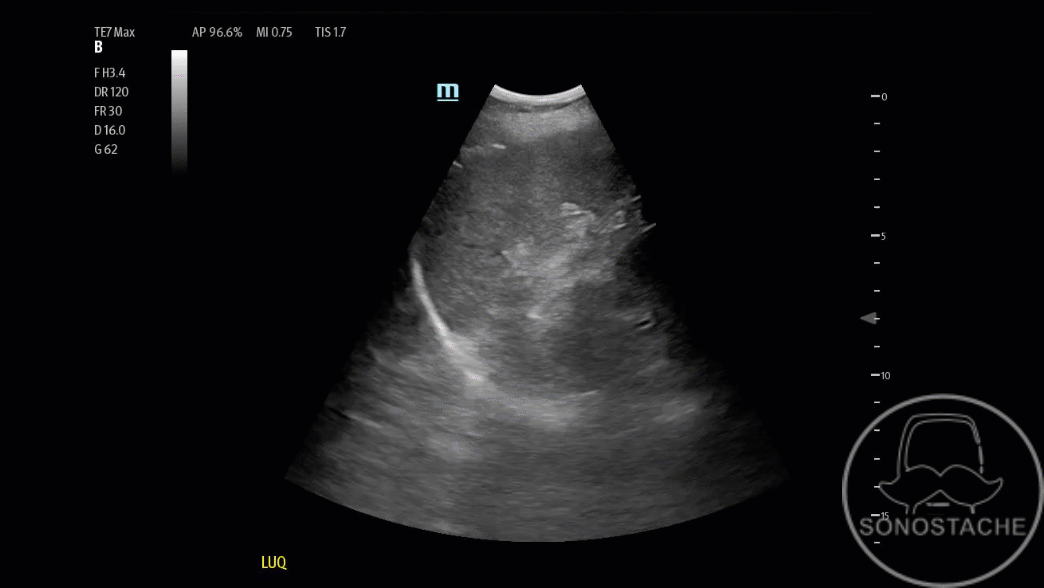
This view similarly evaluates above the left hemidiaphragm. In addition, it evaluates the dome of the spleen (the subphrenic space), the spleen tip, and the spleno-renal interface. Of note, the spleno-renal interface often does not show signs of obvious free fluid due to the spleno-renal ligament, however you may see signs of free fluid with significant splenic or renal trauma.
Bladder/Pelvic Views

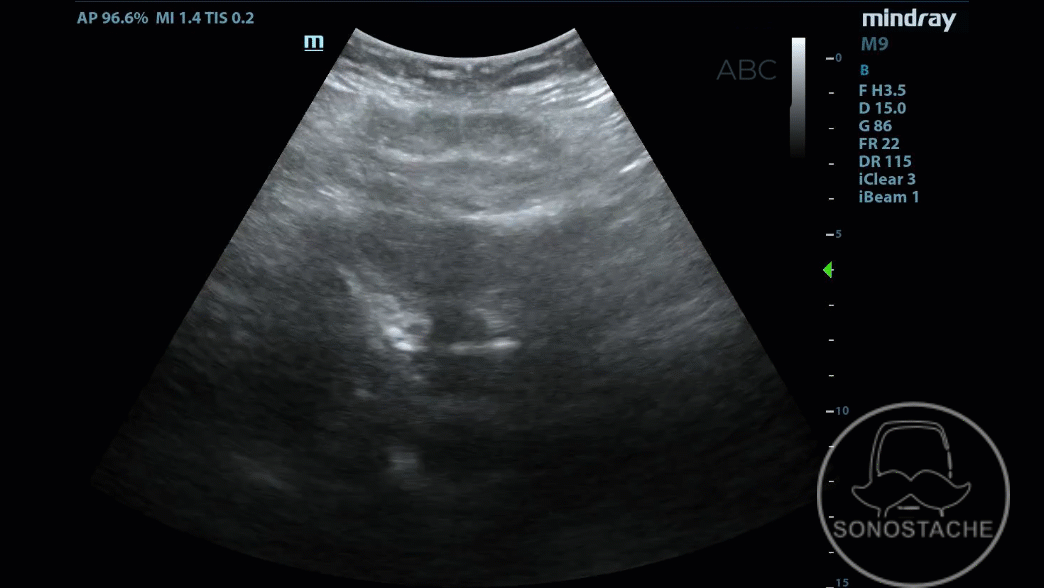
These views evaluate the rectovesicular space in males and the rectouterine space (Pouch of Douglas) in females for free fluid.
Pathology:
A key point is that any view with a positive finding constitutes a positive FAST exam.
Hemopericardium:
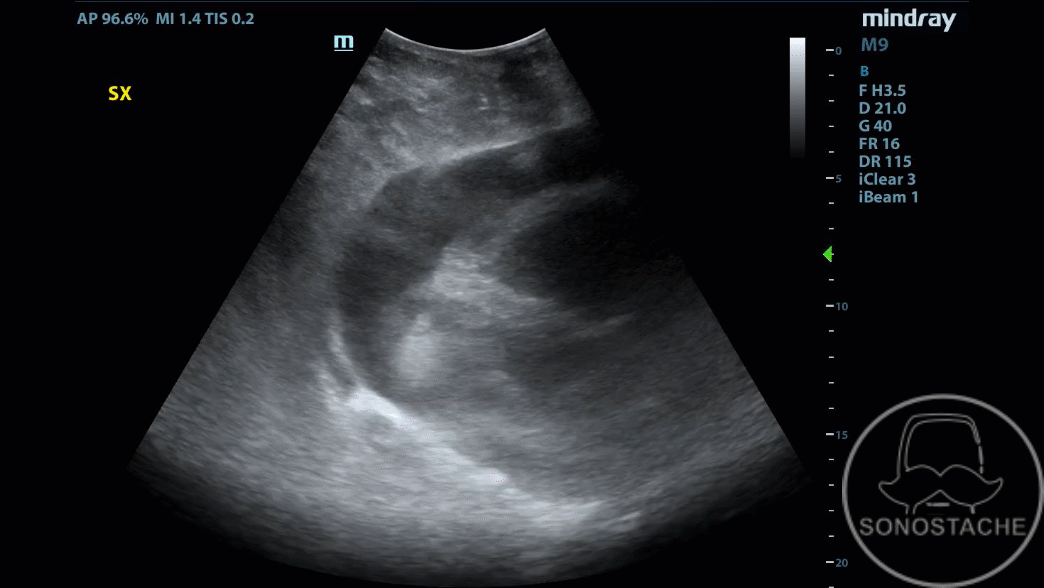
Here we see effusion layering around the heart. In the setting of trauma, we assume this to be hemopericardium.
Positive RUQ:

Positive LUQ:
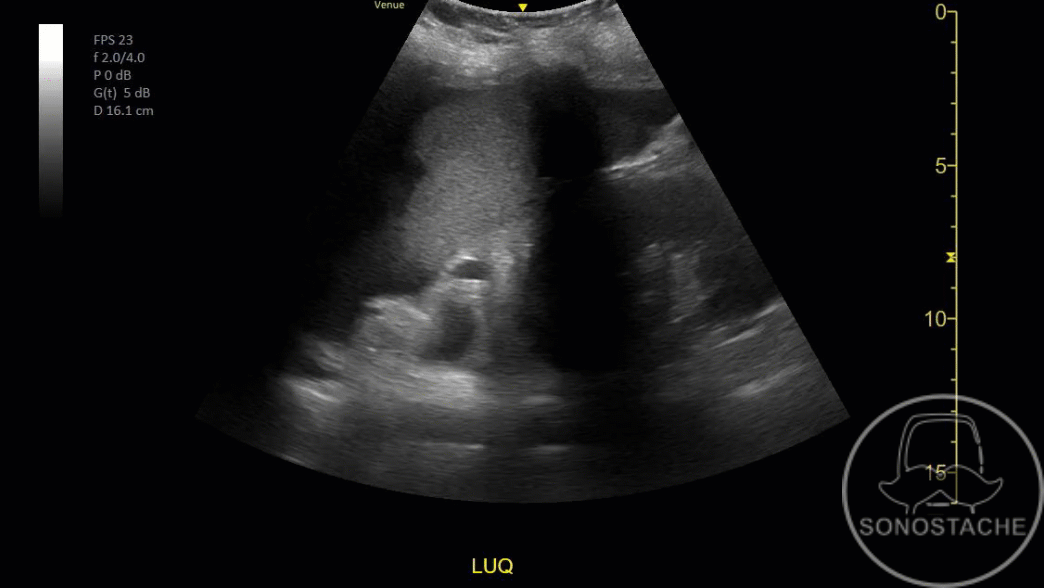
Positive Pelvic Views:
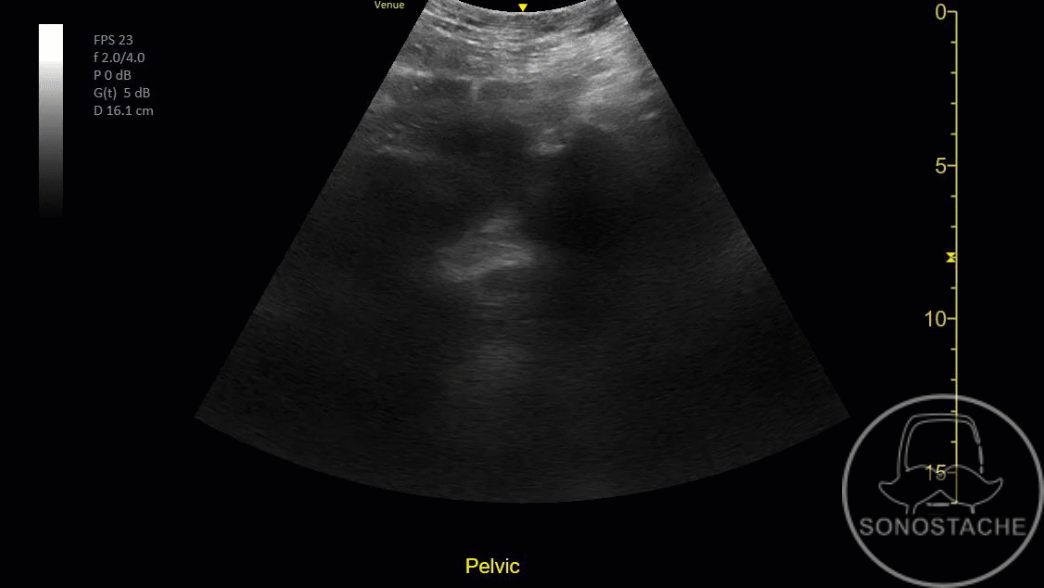
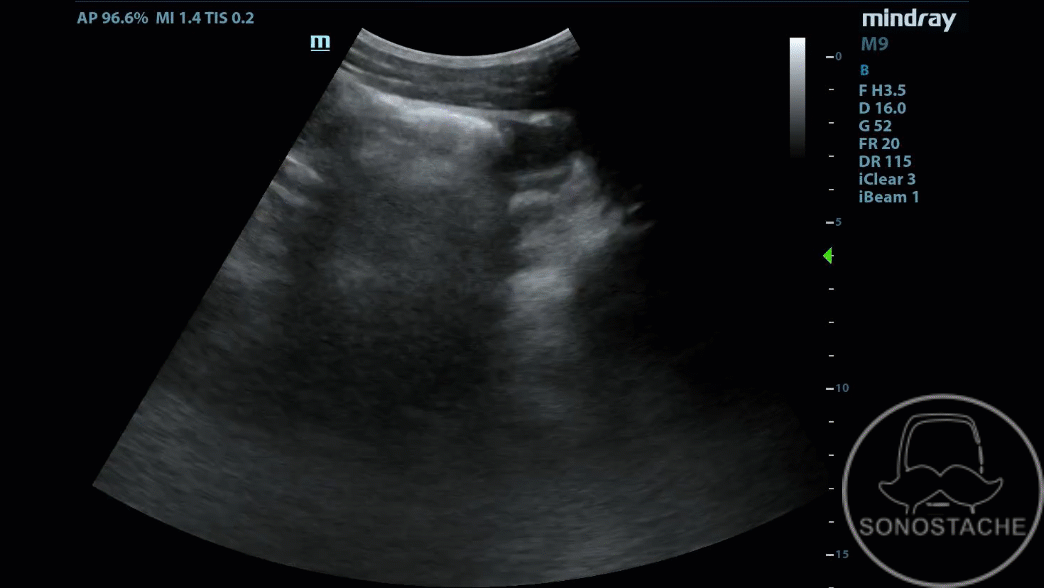
Hemothorax:
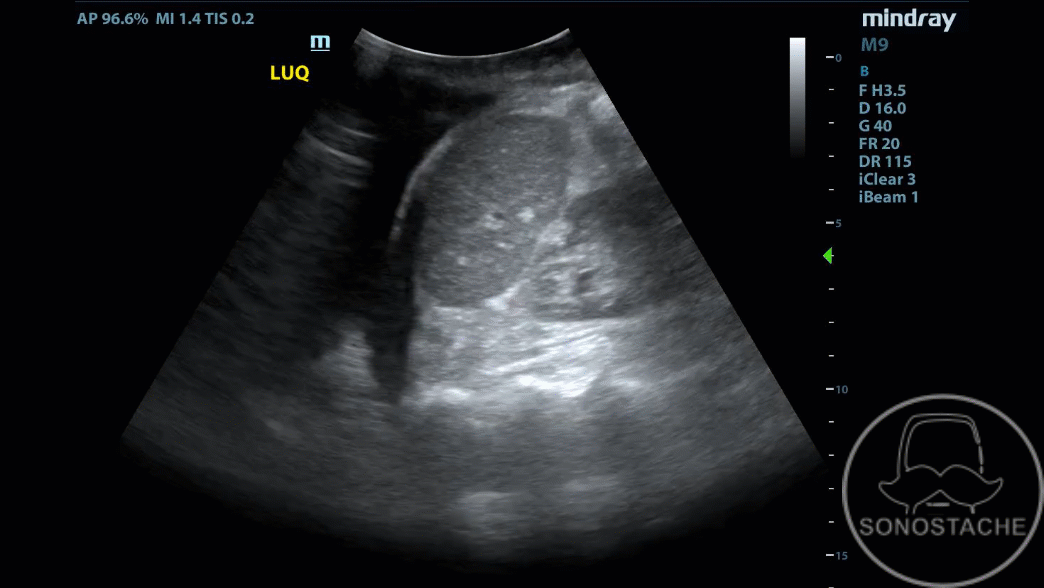
Artifacts:
Mirror Image Artifact:
Mirror artifact results from a highly reflective surface (like the diaphragm) and causes ultrasound beams to bounce between that surface and other structures at least once before returning to the ultrasound transducer. This produces a mirror image on the other side of the reflective surface. This is a normal artifact, and does not constitute a positive FAST examination.
Here we see a RUQ / lateral chest view with a mirror image artifact on the diaphragm producing what may look like a “second liver” in the far left field. This might be mistaken for pleural effusion or hemothorax.
Pearls:
For the LUQ view, due to the smaller size of the spleen in comparison to the liver, you may have to put your probe very posterior and almost on the stretcher. It also is often more cephalad than expected.
Pitfalls:
RUQ: The gallbladder can be mistaken for free fluid. Free fluid often has a sharp or spiculated appearance, while the gallbladder is round and surrounded by the hyperechoic gallbladder wall.
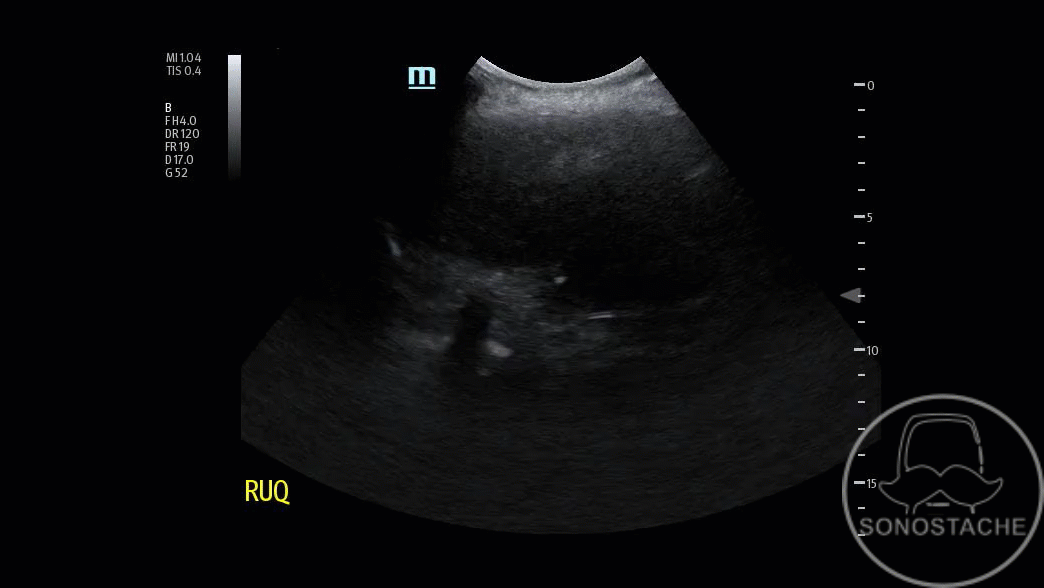
LUQ: The stomach is commonly mistaken for a positive fast exam. This may be differentiated as it is often located anteriorly and in the far field of the LUQ view, in addition to the mucosal rugae appearance of the stomach.
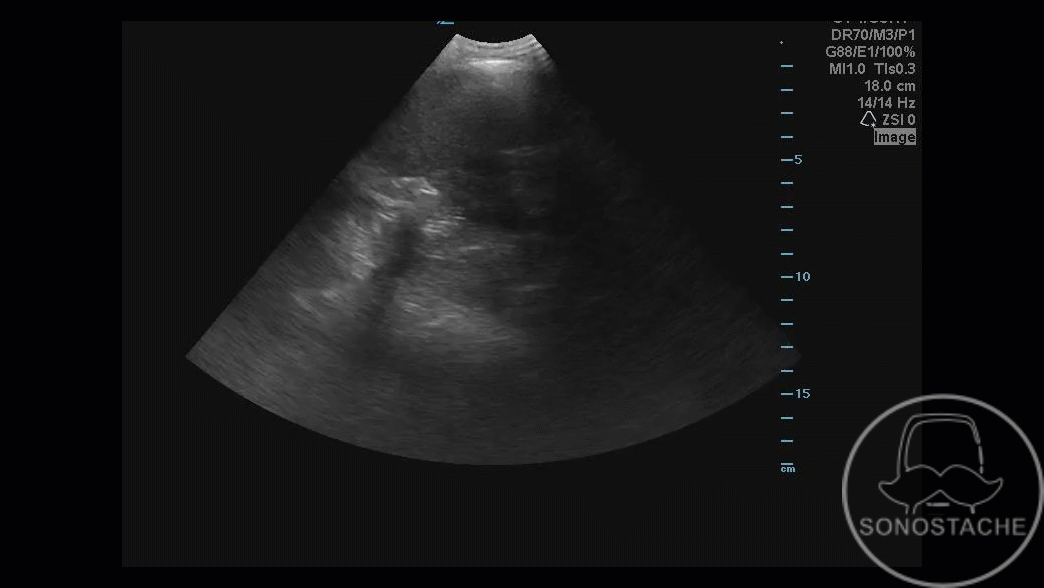
For both LUQ/RUQ: the double line sign is often mistaken for free fluid, this is in fact perinephric fat.
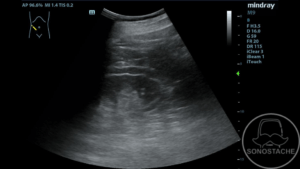
Pericardial Fat Pad:
The pericardial fat pad can sometimes appear hypoechoic and might be confused for a pericardial effusion. If the hypoechoic region does not track around the heart, or if it is not seen in other views, it is less likely an effusion.
Pelvic Views:
Do not mistake the seminal vesicles/prostate or uterus for free fluid.
Free fluid can hide in an overgained image of the bladder. This is due to posterior acoustic enhancement, where the image is much brighter deeper to fluid filled structures such as the bladder.
